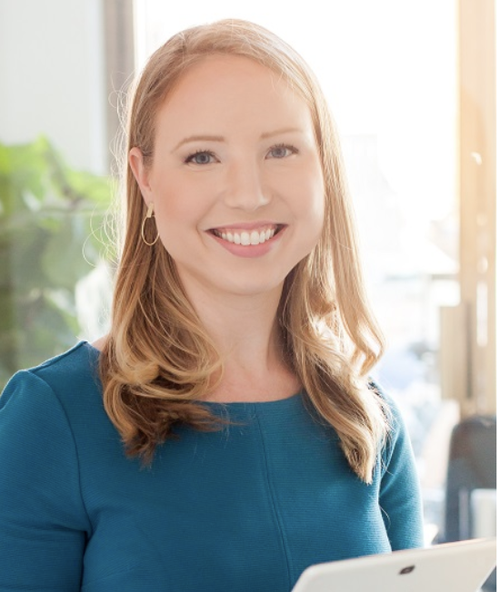How to Write an About Page that Helps you Sell

Did you know that About pages are often the second-most visited pages on a business’ site? Crazy right? And even for ecom companies, the About page gets a lot of traffic. So here are four guidelines for how to write an About page that helps you sell:
1. Write your about page for your customer
Despite the name, the about page isn’t really about you, your company, or your products. Instead, like the rest of your site, the about page is really about your readers – your customers, and prospective customers. So when I write sites for my clients, I always open the about page by addressing the client’s ideal customers directly, reassuring them that their problems and desires are heard and understood.
There are a few ways you can do this, depending on your brand voice and tone.
I happen to favor the ultra-direct route, simply introducing exactly what the company does and who it’s for. Something like “Hey, we see you, you outdoor-adventurer you. And we know you’re tired of the same old tough jerky trail snacks. That’s why our company exists. To make every hike a little more delicious.”
You might think you already shared enough of that information on the homepage, but remember, people tend to skim. And, with our ever-increasing content overload, it takes more impressions for messages to register. So don’t be afraid of repeating yourself on the About page.
2. Talk about what makes you different
What sets your all-natural snacks apart from the other all-natural snacks in the market? You’ve got to drive home your differentiating factors at every opportunity.
Again, don’t be afraid to repeat yourself (see what I just did there?).
It’s not enough to mention your uniqueness once or twice on your site… you’ve got to drive it home in every message you write, whether on Instagram, in your newsletter, or on your site.
3. Introduce yourself as a person
I look at CPG companies’ websites all the time and I’ve noticed a trend – on the About page there’s a lovely story about the “founder” and how she discovered a need in the market, and sought to find a solution, leading her to founding a new company. But never in the narrative are we actually introduced to her.
That’s a missed opportunity! Consumers love buying from individuals. So introduce yourself as the founder and let your readers start building a trusting relationship with your brand from the get go. And while you might feel a little hesitant, I’m putting it out here: add a professional photo of yourself. So many founders prefer to stay in the background, but seeing your face lets potential customers build instant trust and start building feelings of affiliation that they just can’t when they’re only reading about you.
Bonus points if you introduce your team members too! Share the credit and let customers into your community by sharing photos and details of at least a few team members, from all levels of your org.
Remember – your name and photo are already out there on the internet, so why not showcase them in a way that builds your brand for the people who’ve clicked on your site – they’re showing that they’re already budding fans of your brand!
4. Share your values
A lot of consultants would say you need a strong mission and vision statement. And I think that for internal alignment they’re absolutely necessary. But I don’t think you need to paste them up on your site. When’s the last time you read a company’s vision statement online and thought “yes! I want to be a part of this”?
That doesn’t mean that customers don’t care about corporate values, though. They absolutely do. So share them in a way that’s easily digestible, perhaps in a few bullet points.
Then share how you’re actually living those values out in real life. Generation Z is even more concerned with buying from companies doing good in the world. So this is not the time for hiding your light under a bushel. Share your good works loud and proud.

If you have the above four elements on your about page, you’ll be ahead of the pack. But to make your page even more impactful, you’ll want to cut the clutter. Take a good ol’ Marie Kondo look at your page and see if you’ve got any paragraphs that just don’t spark joy.
We all know readers are in a hurry today, and tend to skim, rather than read. That doesn’t mean your copy has to be short. If your copy is interesting, people are willing to scroll and scroll and scroll… (thanks, Instagram, for getting us in that habit).
So the key isn’t to cut for cutting’s sake. It’s to prune down the content to the most powerful parts – the parts that get readers to fall in love with your brand, and then click “shop.”
Things to skip:
- Your full bio
There’s a difference between introducing yourself, and giving us the full bio. It’s not that your story isn’t worthy of being told – it absolutely is. But too much of a good thing… well. It just may not be relevant to your overall objective.
Include enough of your story to add credibility and relatability. And if you take speaking engagements or want to have a bio available for media, just have it linked from your About page.
- The full chronicle of your company’s history
I majored in History in college and I love a good timeline as much as any museum curator. But think twice before writing out every milestone in your company’s history. Instead, consider having a link so readers can jump to the full story on another page if they want all the behind-the-scenes details. The year you got series A funding is undoubtedly more interesting to you than it is to 99% of your readers.
- Too many details on your hobbies, company pets, or other irrelevant details.
Fun facts are fun. But long lists of fun facts get boring fast. Remember, your page is more about your readers than it is about you! So keep that in mind when you list of those tidbits – consider capping them at three.
- Long blocks of text
No matter how good your content is, people are unlikely to wade through it if it’s written in long complex paragraphs. Consider instead breaking your text into much shorter, and narrower, blocks.
If you squint at your page and it looks like it could be confused for a high school essay, then your line length is way too wide, and your up-to-your-English-teacher’s-standards paragraphs, well they’re just too long.
Once you’ve cut the clutter, it’s time to hit publish. A clean, succinct, consumer-focused About page not only elevates your brand, but also makes it easier for browsers to turn into buyers. And at the end of the day, that’s what matters.

Anna Bradshaw is a conversion copywriter for happy brands. She helps businesses find their core messages and writes data-backed copy that's packed with flavor. She writes from Southern California where she lives with her husband.


